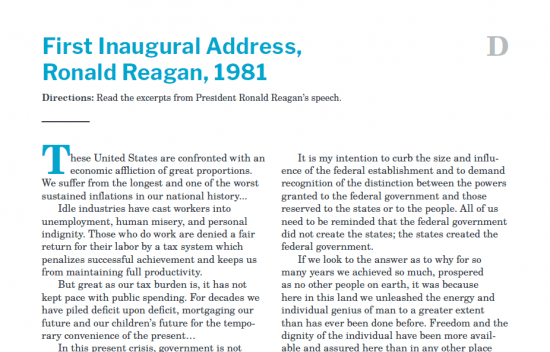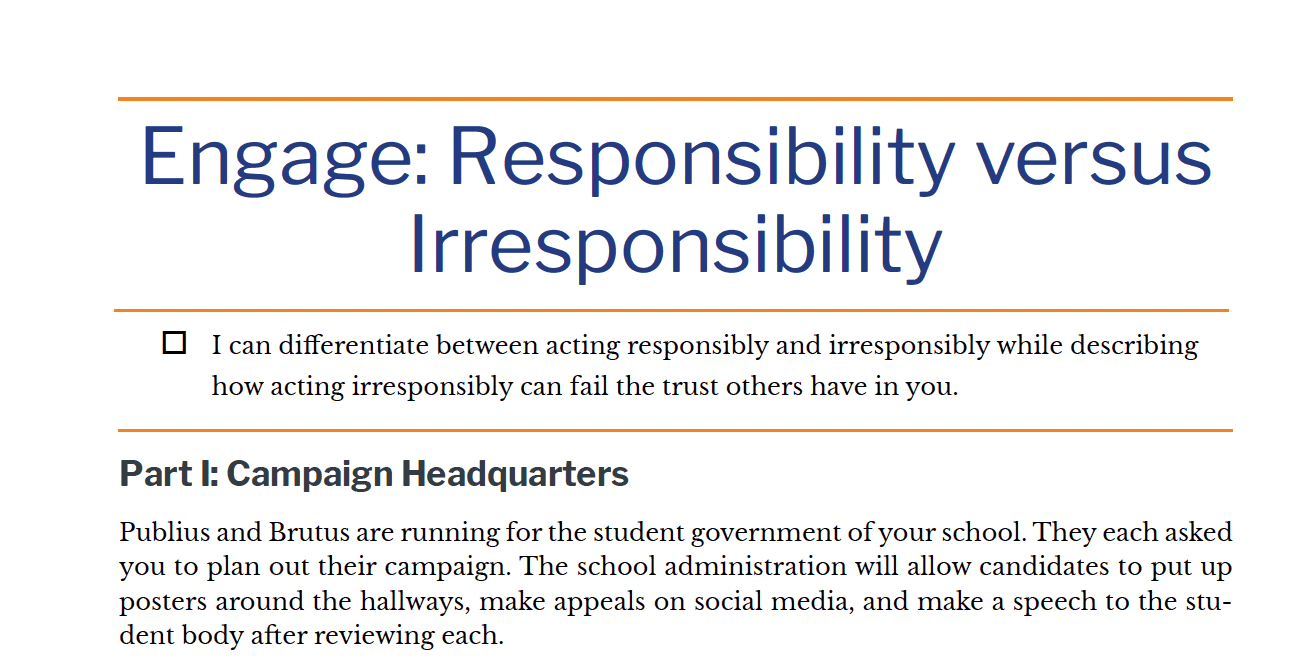



Cold War Playlist
23 items
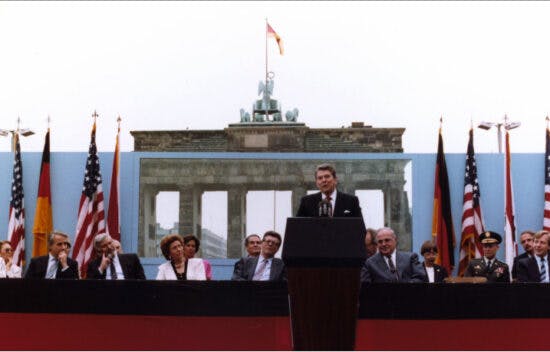
Ronald Reagan, “Tear Down this Wall” Speech, June 12, 1987
Activity
Activity
40 Min
Use this primary source text to explore key historical events.

Tear Down This Wall: Ronald Reagan, the Cold War, and Responsibility – Handout A: Narrative
Activity
Activity
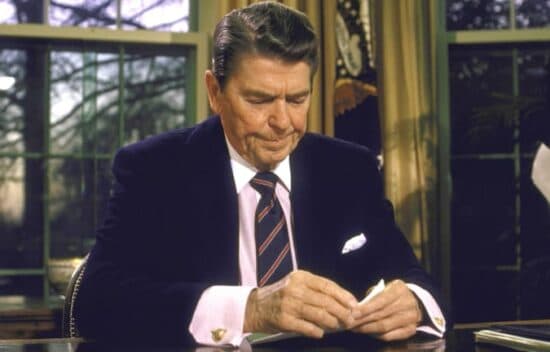
Ronald Reagan, Address to the Nation on the Challenger Disaster, January 28, 1986
Activity
Activity
40 Min
Use this primary source text to explore key historical events.
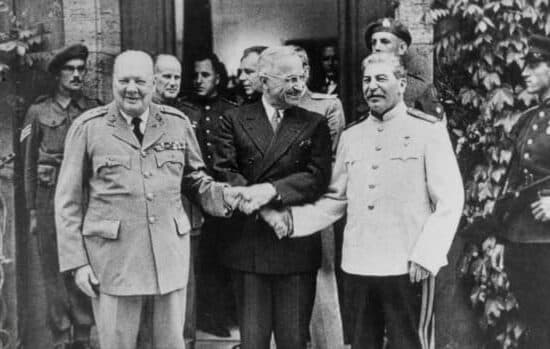
Who Was Responsible for Starting the Cold War?
Activity
Activity
40 Min
Which country, the United States or its previous ally, the Soviet Union, was responsible for the escalating tensions that led to the Cold War that would go on to last for decades? Two scholars debate this question.
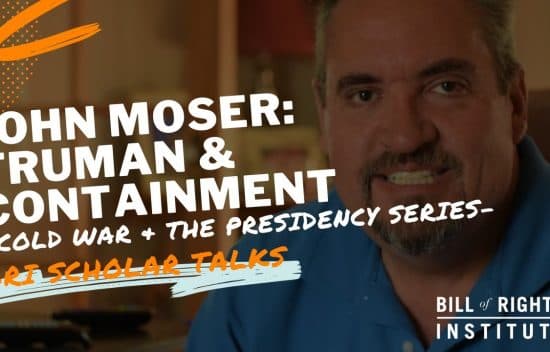
Truman & Containment with John Moser | BRI Scholar Talks: Cold War & The Presidency Series #2
Video
Video
20 Min
What was containment and how did it shape American foreign policy during the Cold War? In this Cold War & the Presidency Scholar Talk video, BRI Senior Teaching Fellow Tony Williams is joined by John Moser, Professor of History at Ashland University, to discuss the significant role that Harry Truman played in the Cold War. How did Truman's presidential unilateralism provide a precedent for his successors to fight major wars without a declaration of war? Did Truman’s expansive view of American foreign policy and global responsibilities align with constitutional principles?
20 Min
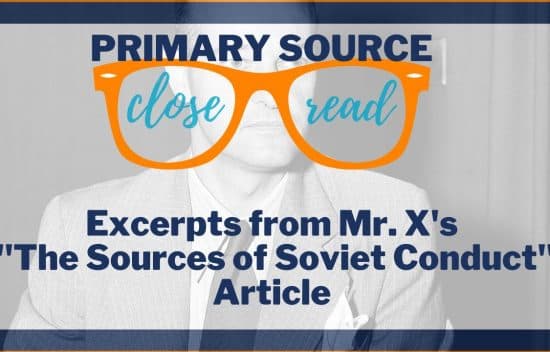
Reading Mr. “X”s “The Sources of Soviet Conduct” | A Primary Source Close Read w/ BRI
Video
Video
36 Min
What were the constitutional parameters of American foreign policy as Soviet influence began to eclipse eastern Europe? This was the very question a Mr. “X” sought to explore as the world entered a new phase in history – The Cold War. In this Primary Close Read video, BRI Staff Kirk Higgins and Tony Williams unpack “The Sources of Soviet Conduct” by George Kennan, aka Mr. “X.” How should the U.S. respond to Soviet expansion? What was the guiding motivation for Soviet aggression according to Kennan?
36 Min
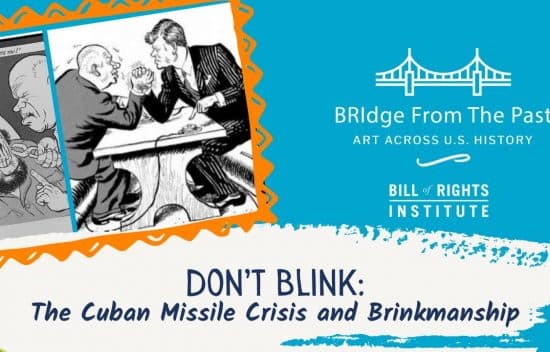
Don’t Blink: The Cuban Missile Crisis and Brinkmanship | BRIdge from the Past
Video
Video
9 Min
The world watched as the US and Soviet Union squared off for thirteen days during the Cuban Missile Crisis in October of 1962. So, was the Cold War really World War III? In this BRIdge from the Past video, Mary explores this question by looking at two political cartoons on the Cuban Missile Crisis.
9 Min

The Rise and Fall of Joseph McCarthy | BRI’s Homework Help Series
Video
Video
4 Min
Our latest Homework Help Evidence of History video tells the story of the rise and fall of Senator Joseph McCarthy, a fierce partisan and demagogue whose battles against Communism in early 1950s America utilized the new medium of television to garner public attention. Preying upon the public's fear of communism within the U.S. government, he hurled accusations against numerous political enemies often with little or no evidence, and with scant regard to the principles of due process, free speech, and liberty. The new medium of television, which helped his meteoric political rise, would ultimately play a key role in his undoing.
4 Min

Joseph McCarthy and Irresponsibility
Lesson - 2 Activities
Lesson
2 Activities
90 Min
How can irresponsibility create an unhealthy civic culture of fear and distrust?
90 Min

McCarthyism DBQ
Lesson - 2 Activities
Lesson
2 Activities
70 Min
Use this lesson with The Postwar Red Scare Narrative to discuss the impact McCarthy and widespread fear of Communism had during the 1950s. This Lesson can also be used with the Cold War Spy Cases Narrative and the George Kennan ("Mr. X"), "Sources of Soviet Conduct," July 1947 Primary Source.
70 Min
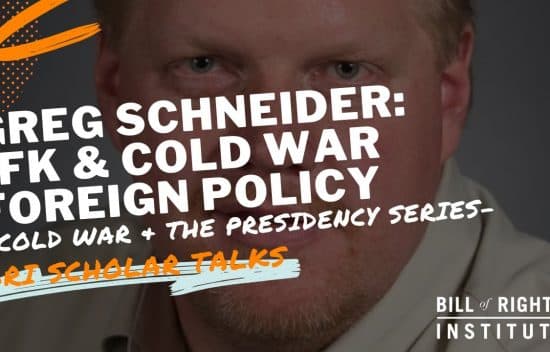
JFK and Foreign Policy with Greg Schneider | BRI Scholar Talks: Cold War & The Presidency Series #3
Video
Video
20 Min
How did JFK respond to foreign policy crises during his presidency? In this Cold War & the Presidency Scholar Talk, BRI Senior Teaching Fellow Tony Williams is joined by Greg Schneider, Professor of History at Emporia State University, to discuss the significant role that John F. Kennedy played in the Cold War. Did JFK and his advisors experience growth in addressing Cold War conflicts? How did JFK continue Harry Truman’s approach of containment during his presidency?
20 Min
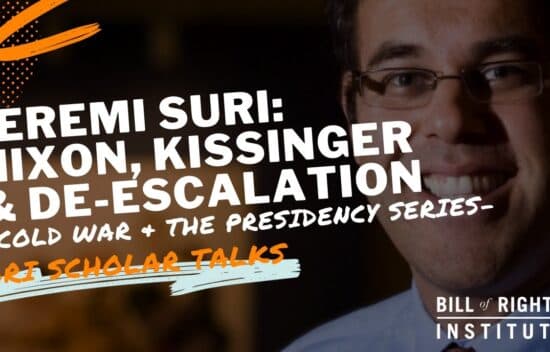
Cold War De-Escalation with Jeremi Suri | BRI Scholar Talks: Cold War & the Presidency Series #4
Video
Video
21 Min
What next paths did President Richard Nixon and Henry Kissinger forge in American Cold War foreign policy? In this Cold War & the Presidency Scholar Talk, BRI Senior Teaching Fellow Tony Williams is joined by Jeremi Suri, Professor of History and Public Affairs at The University of Texas at Austin, to discuss how Richard Nixon and Henry Kissinger subverted Congressional oversight to achieve their Cold War agenda. What was different about their approaches from those of previous administrations? Should Nixon have been able to use so much presidential power to achieve peace?
21 Min

Reagan’s Cold War Strategies with William Inboden | BRI Scholar Talks
Video
Video
28 Min
Was Ronald Regan’s Cold War strategy actually successful? In this episode of Scholar Talks, William Inboden, Professor and Director of the Hamilton Center for Classical and Civic Education at the University of Florida, joins BRI Senior Fellow Tony Williams. They discuss Reagan's war strategies in his first and second administrations, keeping the Cold War Cold, and determine whether or not Reagan's strategies were successful.
28 Min

Ronald Reagan’s “Tear Down This Wall” Speech Explained | Primary Source Close Reads Explained
Video
Video
16 Min
Why did President Reagan see the Berlin Wall as a symbol of oppression during the Cold War? In this episode of Close Reads Explained, BRI Senior Fellow Tony Williams helps analyze Ronald Reagan’s 1987 speech in Berlin calling for the removal of the Berlin Wall. What are President Reagan’s main criticisms of communism? What was his overall objective in the Cold War with the Soviets and how did his speech embody this?
16 Min

Cold War Spy Cases
Essay - 2511 Words
Essay
2511 Words
By the end of this section, you will explain the causes and effects of the Red Scare after World War II.

Cold War DBQ (1947-1989)
Lesson
Lesson
Use this lesson after students have read the introductory essay to introduce foreign policy milestones during Reagan's presidency. This lesson can be used with The Iran-Contra Affair Narrative; the "Tear Down This Wall" Ronald Reagan and the End of the Cold War Decision Point; and the Ronald Reagan, "Tear Down this Wall" Speech, June 12, 1987 Primary Source.
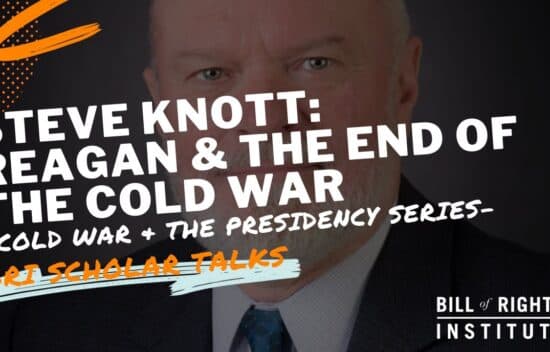
Reagan & the Cold War with Stephen Knott | BRI Scholar Talks: Cold War & the Presidency Series #5
Video
Video
17 Min
While there were a variety of factors that led to the end of the Cold War, no one can deny that Ronald Regan played a pivotal role. For the final episode of our Cold War & the Presidency Series, BRI Staff Tony Williams is joined by Stephen F. Knott, professor of National Security Affairs at the Naval War College, as they discuss Reagan's moral vision of the Soviet Union and how it shaped his practical approach to confronting the Soviets. Why did he alter the policies of past presidents like détente and the containment doctrine? What impact did Reagan’s approach to the Cold War have on the American presidency and the end of the Cold War?
17 Min
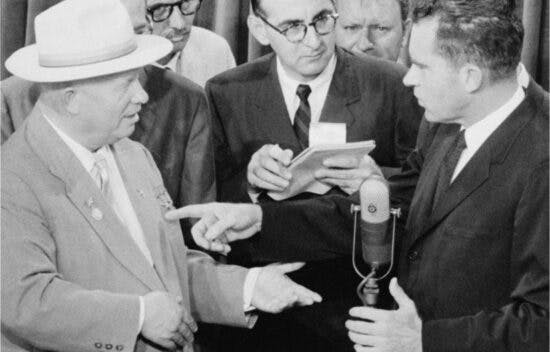
The Nixon-Khrushchev Kitchen Debate
Essay - 1967 Words
Essay
1967 Words
By the end of this section, you will explain the continuities and changes in Cold War policies from 1945 to 1980.
